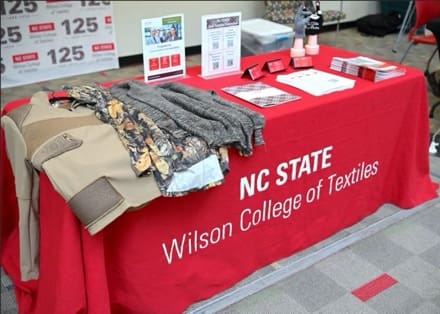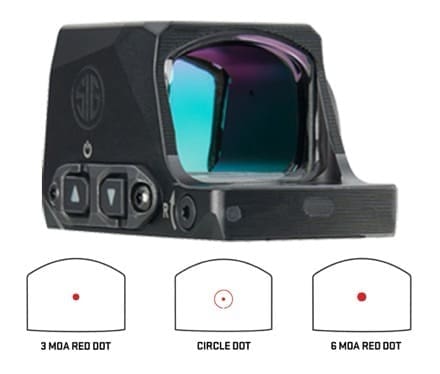Marine Corps Base Quantico, Va. —
Earlier this month, MCSC’s Program Manager Combat Support Systems, or PM CSS, was on the ground on Tobacco Road for the 2024 FEDTEX Summit– a yearly symposium that connects the DOD’s acquisition community with industry leaders in textiles and tactical equipment—and the 2024 Special Operations Medical Association Conference, a forum that showcases the latest in expeditionary medical technologies.
Hosted at North Carolina State University’s McKimmon Conference Center in Raleigh, FEDTEX provided the team an opportunity to engage with existing industry partners in the textile sector, tour the Wilson College of Textile facilities, and connect with graduate students interested in entering federal service.
According to Col. Paul Gillikin, CSS program manager and NC State alum, “Connecting with the textile community is essential to meet Force Design’s modernization goals and support Expeditionary Advanced Base Operations, or EABO. Strengthening supply chains and integrating advanced textiles and manufacturing techniques are crucial to mitigating the growing risks in the electromagnetic spectrum. It was important to discuss Marine Corps and Joint warfighter needs and then hear industry feedback on that direction.”
Although the Pentagon’s strategic return to the Indo-Pacific has led to a renewed focus on the fielding of expeditionary capabilities meant to dominate the global littorals, experts have warned a future war against our nation’s pacing threat could be decided—in large part—on the electromagnetic spectrum.
Exposing this emerging reality, the Pentagon recently warned that China has developed advanced electromagnetic spectrum monitoring technology, making it difficult for Marines to conceal their presence on the battlefield. From heat signatures to electromagnetic emissions from their gear, the warfighter risks revealing critical information that adversaries can detect and exploit.
With high-end weapon systems dominating the headlines, PM CSS is actively pursuing technology to protect individual Marines and small units. Along with its Joint clothing partners, the team is focused on the visible and non-visible portions of the electromagnetic spectrum to increase capability against emerging sensor threats, particularly in the thermal realm.
Although clothing has historically been seen as a source of comfort and protection from varying weather conditions and ordnance, developments in military technology from our adversaries have forced experts to reimagine the role of textiles on the modern battlefield, viewing them as personal protective equipment– much like body armor– that enhances the warfighter’s lethality and reduces detectability from peer and near-peer adversaries.
According to Ed Howell, Product Manager for Combat Service Support Equipment, “The FEDTEX conference provided an excellent opportunity to explore the state of the art in domestic textiles for Marine Corps tactical uniforms. It was particularly eye-opening to witness the mannequin, PyroMan, undergo a flame test while wearing clothing at the Thermal Protection Laboratory in the Wilson School of Textiles at NC State University. Flame resistance, along with signature management, is one of the key attributes we are seeking in the next generation of Marine Corps Combat Utility Uniforms.”
Similarly, team members from PM CSS’ Expeditionary Medical team were at SOMA to meet with American and international industry partners to explore the latest advancements in field medical technology.
Under Force Design’s strategic blueprint for modernization, collaboration with industry is pivotal for enhancing medical support and operational readiness in contested environments. These efforts aim to improve Marines’ survival while awaiting evacuation, significantly boosting their resilience and effectiveness in challenging situations.
“EABO has fundamentally changed field medical operations,” said Navy Cmdr. Kellye Donovan, EMS Team Program Analyst-Pharmacist. “We have shifted from the GWOT’s ‘Golden Hour’ for patient movement to extended patient holding, providing 96-hour patient care in the field. We are looking for industry assistance to push care to a lower level, make medical capabilities more agile and maneuverable, and reduce logistical constraints in a distributed, contested environment.”
Yet, while creating a forum for collaboration with industry is crucial, connecting with students is equally essential to CSS’ mission as engaging the next generation of innovators ensures a continuous flow of fresh ideas and talent, driving the development of critical textile and medical capabilities for the Corps.
Jacqueline Sewell, a Textile Technologist at the Army Combat Capabilities Development Command and matrixed to the Clothing & Equipment Team under CSS, holds both undergraduate and graduate degrees from the Wilson College of Textiles, or WCOT.
“NC State’s programs have provided me with a foundational knowledge of textiles and an avenue to tangibly contribute to increasing our warfighter’s comfort, capabilities, and mission success through their DoD-issued gear,” she said. “Working for the DoD has allowed me to apply the knowledge gained through my education at WCOT to research, develop, test, and evaluate textiles with active-duty Marines stationed across the US (from Mountain Warfare Training Center to Kaneohe Bay) in leading to the acquisition and sustainment of items such as combat uniforms and extreme cold weather base layers.”
Ultimately, the capabilities being developed by CSS in collaboration with the Joint Force and industry partners are helping modernize and strengthening our military forces. Advanced textiles are enhancing protection and reducing detection risks, while emerging medical technologies are improving field treatment and increasing survival rates. These innovations help maintain operational readiness and effectiveness in contested environments, ensuring that our warfighters are equipped with the best possible tools to succeed on the modern battlefield.
By Johannes Schmidt, MCSC Office of Public Affairs and Communication | Marine Corps Systems Command
You can skip to the end and leave a response. Pinging is currently not allowed.
Read the full article here







Leave a Reply